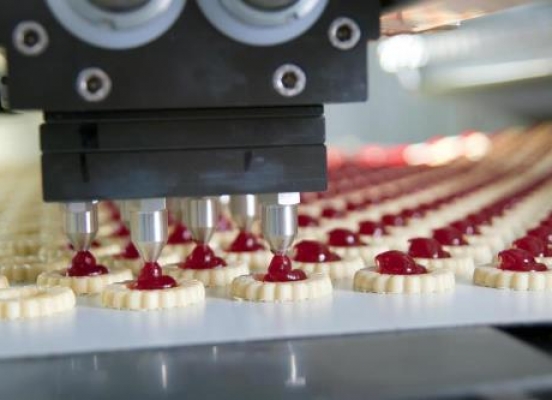Dust Collection in the Food Industry
Dust collection in the food industry can be a challenge.
The basic nature of particulate generated during food manufacturing and processing presents a unique challenge for the dust filtration industry. In many food products, the dust or particulate that needs to be captured contains moisture, oils, or is sticky in nature. This type of dust can create significant complications if traditional pulse jet or baghouse collectors are used in this application. Most often, a wet dust collector is the best alternative when used with these types of dust.
Types of Dust
Before choosing what type of dust collector is appropriate for the application, the fundamental nature of the type of dust generated during the process must be understood. In the food and beverage processing industry, the dust generated is often sticky in nature or tends to be hygroscopic. This dust can also attract static electricity. A more in-depth study of the dust involved in the processes can reveal information about particle size and moisture content. Using the information gained from the study of the dust, a more informed decision can be made about what type of dust collector would be appropriate for the application.
Traditional Dry Dust Collectors
When typical cartridge or baghouse style dust collectors are used in the food industry for the collection of oily or hygroscopic dust, there are several issues that can arise. These particular dust tend to quickly clog the filters in these collectors which can affect several upstream and downstream processes. When the filters become clogged, a high-pressure drop through the equipment is experienced. As a result, collection efficiency is negatively impacted. Because of the clogged filters and higher system pressure, constant airflow cannot be maintained. Pulse-jet collectors can also be used, however, the increased pulsing required to clean the filters can reduce the life of the filters as well as contribute to increased operational cost. To effectively clean these filters, the equipment needs to be shut down and manually cleaned and filters replaced.
Another problem encountered when using dry dust collectors is the inherent risk of dust explosion, which can lead to lost production, fire, injuries or even loss of life. According to the United States Chemical Safety Board, in the years between 1980 and 2005, there were 281 combustible dust incidents that killed 119 workers and injured 718. There are several features that dry dust collectors can have that will mitigate the effects of a dust explosion. To completely prevent the event from happening in the dry collector, expensive suppression systems are required and lead to equipment downtime if the suppression system is discharged. One particular feature commonly found in dry dust collectors is the explosion vent. These vents relieve the pressure created by the explosion and direct the energy away from people and critical equipment. Dry collectors that have explosion vents must be located outdoors or be vented outdoors, which can sometimes lead to complicated ducting and expensive installation costs.
A Better Solution
The problems that these types of food dust can cause for dry collectors lead food and beverage processors to look for different solutions. Often times, the best solution for these applications is a wet dust collector. A wet dust collector addresses several of the problems that dry dust collectors have. Instead of a traditional filter media, the wet dust collector uses a water stream as a filter. This alone addresses several issues. There is no physical media that gets clogged and needs to be replaced, thereby reducing labor requirements, operating expense, and equipment downtime. Also, the wet collector has a constant collection efficiency, airflow, and static pressure. This unique feature allows it to be used in a variety of applications where constant airflow is a requirement, such as range hoods or source capture equipment.
The other major benefit of the wet collector is the mitigating effect it has with regard to a dust explosion. By having water as the filter media, there is no need for explosion venting or other protection. The use of water also eliminates the need for spark detection or spark traps that are often necessary for dry dust collectors. As a result, the wet dust collectors can be installed indoors and the clean air can be recirculated back into the building without additional fire protection.
An Important Choice
It is important for food and beverage manufactures to carefully consider the dust collection options available. Finding the right solution that combines performance, maintainability and safety can have a major impact on operations. In many cases, choosing a wet dust collector for the food and beverage processing application can help decrease downtime, increase safety and provide constant, reliable performance that can all have a positive impact on operations.
To know more, please check AAF.

